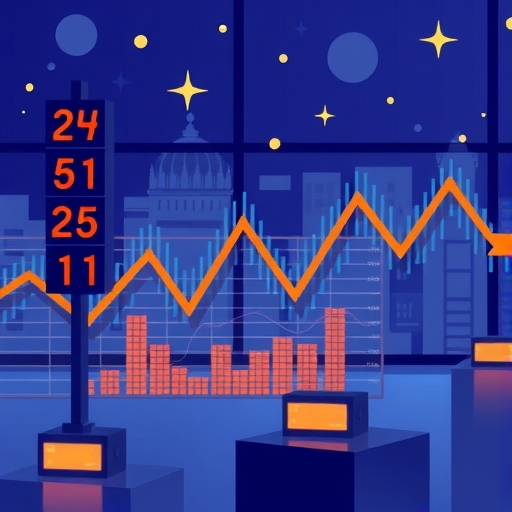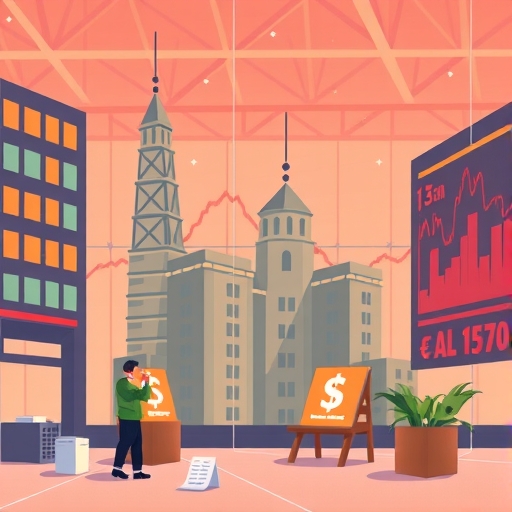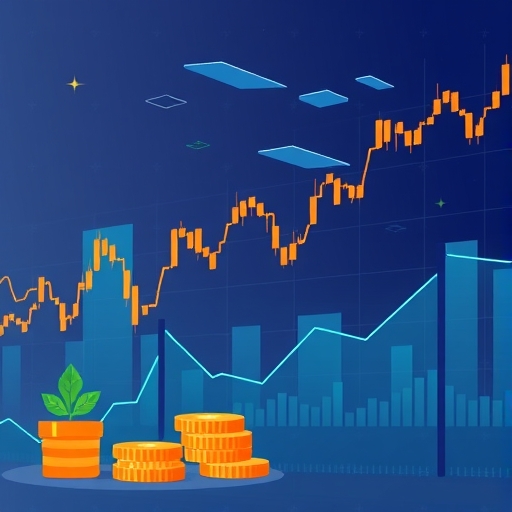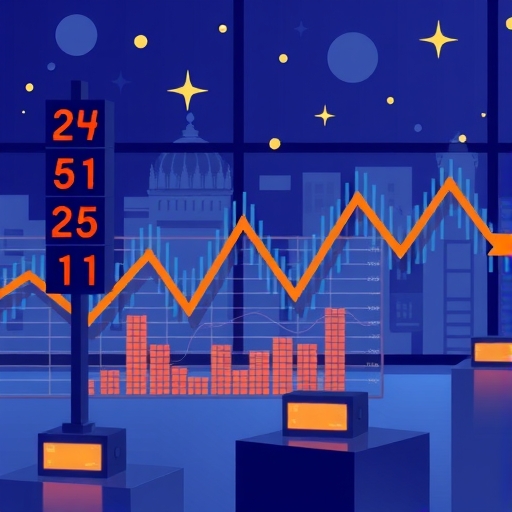Unlock Your Portfolio’s Potential: A Comprehensive Guide to Exchange-Traded Funds (ETFs)
Are you looking for a smarter, more diversified way to invest without the complexities of picking individual stocks or the high fees of some traditional funds? If so, you’ve likely heard of Exchange-Traded Funds, or ETFs. These innovative investment vehicles have become incredibly popular, revolutionizing how everyday investors approach the stock market. But what exactly are ETFs, how do they work, and why should you consider them for your financial future?
In this guide, we’ll demystify Exchange-Traded Funds, exploring their core definitions, how they operate in the market, and the significant advantages and potential drawbacks they present. We’ll also navigate the diverse landscape of ETF types, compare them to other common investments like mutual funds and individual stocks, and provide practical steps on how to integrate them into your investment strategy. Our goal is to equip you with the knowledge to make informed decisions and build a resilient portfolio.
Beyond their foundational structure, the widespread adoption of ETFs can be attributed to several compelling factors that resonate with both novice and experienced investors alike. These factors often include:
- Their ability to offer instant diversification across various assets, industries, or geographies with a single purchase.
- The generally lower expense ratios compared to many actively managed mutual funds, which can significantly boost long-term returns.
- The flexibility to trade them throughout the day on major stock exchanges, similar to individual stocks.
Understanding the primary applications of ETFs can help investors align these tools with their specific financial objectives.
| Common ETF Use | Description |
|---|---|
| Core Portfolio Holding | Building a foundational investment with broad market exposure (e.g., S&P 500 ETF). |
| Sector-Specific Bets | Targeting growth in particular industries like technology or healthcare. |
| International Diversification | Gaining exposure to foreign markets and economies without direct foreign stock purchases. |
| Tactical Trading | Leveraging intraday tradability to react to market news or short-term trends. |
What Exactly Are ETFs and How Do They Function?
At its heart, an Exchange-Traded Fund (ETF) is an investment fund that holds a collection of assets, such as stocks, bonds, or commodities, within a single package. Think of it like a diverse basket of groceries: instead of buying each item individually, you’re buying a pre-selected assortment that caters to a specific purpose, whether it’s tracking a market index or focusing on a particular industry. When you invest in an ETF, you own a portion of this basket, but you don’t directly own the individual underlying assets within it. This structure allows you to invest in many different securities simultaneously, spreading your risk more effectively than if you put all your money into a single company’s stock.
One of the defining characteristics that sets ETFs apart is how they trade. Unlike traditional mutual funds, which are priced only once a day after the market closes, ETFs are bought and sold on stock exchanges throughout the trading day, just like individual stocks. This means their prices can fluctuate minute-by-minute, reflecting real-time market demand and supply. This intraday tradability offers investors a great deal of flexibility, allowing us to react quickly to market news or adjust our positions. An ETF provider designs the fund to track the performance of a specific underlying asset or index, like the S&P 500, and then sells shares of this fund to investors. While ETFs generally boast lower fees due to their often passive management style, it’s worth noting that their long-term returns might slightly differ from the underlying assets due to these inherent expenses.
The Dual Edge: Unpacking the Pros and Cons of ETF Investing
Like any investment tool, ETFs come with a unique set of advantages that make them appealing to many investors, but also certain disadvantages that you should be aware of. Understanding both sides of the coin is crucial for making well-informed investment decisions.
Advantages of ETFs (Pros):
- Diversification: Perhaps the most significant benefit, ETFs offer instant diversification. With a single investment, you can gain exposure to a broad market, a specific industry sector, or even an entire geographic region. This spreads your risk across many different companies or assets, reducing the impact if any one investment performs poorly.
- Transparency: ETFs are highly transparent. Their fund holdings are publicly disclosed daily, giving you a clear, up-to-date picture of exactly what you’re invested in. This is a considerable advantage over many mutual funds, which typically disclose their holdings only monthly or quarterly.
- Tax Benefits: ETFs are generally more tax-efficient than mutual funds. Capital gains taxes are typically incurred only when you sell your ETF shares, giving you more control over the timing of your tax obligations. Mutual funds, on the other hand, often distribute capital gains to shareholders annually, which can lead to unexpected tax bills even if you haven’t sold your shares.
- Cost Efficiency: A major draw for many investors is the typically lower expense ratios of ETFs. Because many ETFs are passively managed—meaning they simply aim to track an index rather than actively trying to beat the market—they incur fewer management fees than actively managed mutual funds. Over time, these lower costs can significantly boost your net returns.
- Liquidity: As we discussed, ETFs trade like stocks throughout market hours. This high liquidity means you can buy or sell shares at any point during the day, offering flexibility to react to market changes and enter or exit positions quickly.
The unique characteristics of ETFs provide a range of benefits that distinguish them from other investment types, making them a cornerstone for many diversified portfolios.
| Key Advantage | Benefit to Investor |
|---|---|
| Instant Diversification | Reduces risk by spreading investment across many assets or sectors. |
| High Transparency | Daily public disclosure of holdings means you always know what you own. |
| Tax Efficiency | More control over capital gains taxes, often only incurred upon sale. |
| Cost-Effectiveness | Lower expense ratios due to passive management, boosting net returns. |
| Intraday Liquidity | Ability to buy and sell shares throughout the trading day, offering flexibility. |
Disadvantages of ETFs (Cons):
- Trading Costs: While many brokers now offer commission-free ETF trading, some still charge commission fees for buying and selling. These small fees can add up, especially if you trade frequently or invest small amounts, potentially eroding your returns.
- Potential Liquidity Issues: While widely traded ETFs are very liquid, less frequently traded ETFs can sometimes have wider “bid-ask spreads.” This means there’s a larger difference between the price buyers are willing to pay and the price sellers are willing to accept, which can make it harder to sell your shares quickly without accepting a lower price.
- Risk of Closure: If an ETF doesn’t attract enough assets to cover its administrative costs, the fund provider might decide to close it down. While your money isn’t lost, you would be forced to sell your shares, potentially at a loss, and then find a new investment for those funds.
- Lack of Customization: ETFs are pre-packaged funds. You’re buying the entire basket of assets as designed by the fund provider. This means you have no say in selecting specific individual assets within the fund, so you need to be comfortable with all the components of the ETF.
- Tracking Errors: While ETFs aim to perfectly track their underlying index or asset, their performance may sometimes deviate slightly. This “tracking error” can occur due to various factors, including the fund’s expenses, the way it manages its assets, or even temporary market inefficiencies.
Despite their many advantages, investors should also be aware of the inherent challenges and potential pitfalls associated with ETF investing to ensure a balanced perspective.
| Key Disadvantage | Potential Impact |
|---|---|
| Trading Costs | Commissions (if applicable) can erode returns, especially for frequent traders. |
| Liquidity Issues | Less traded ETFs may have wider bid-ask spreads, affecting execution price. |
| Risk of Closure | Forced sale of shares if fund closes, potentially at a loss, requiring reinvestment. |
| Lack of Customization | No control over individual asset selection within the pre-packaged fund. |
| Tracking Errors | Performance may slightly deviate from the underlying index due to various factors. |
While the potential drawbacks of ETFs are important to acknowledge, many can be mitigated with diligent research and a thoughtful investment strategy. By understanding these potential pitfalls, investors can make more informed decisions, such as:
- Prioritizing brokers that offer commission-free ETF trading to minimize transaction costs.
- Focusing on highly liquid and widely traded ETFs to avoid issues with wide bid-ask spreads.
- Diversifying your ETF holdings across different fund providers to reduce exposure to the risk of a single fund closure.
Navigating the Diverse Landscape: A Guide to Different ETF Types
The world of ETFs is vast and constantly expanding, with a wide array of options designed to meet almost any investment goal or risk appetite. Understanding the different types available can help you choose the right ones for your portfolio. Let’s explore some of the most common and specialized categories:
- Sector ETFs: These funds focus on companies within a specific industry sector, such as technology, healthcare, energy, or finance. They allow you to invest broadly in a particular industry’s growth without picking individual winners.
- Commodity ETFs: If you’re interested in raw goods, Commodity ETFs bundle assets like gold, silver, crude oil, or even coffee. They offer a way to gain exposure to commodity prices without directly owning the physical goods.
- Stock ETFs: As the name suggests, these ETFs are primarily composed of stocks. They are generally used for long-term growth and offer diversification across many companies, making them typically less risky than investing in individual stocks.
- Bond ETFs (Fixed-Income ETFs): These funds focus on bonds, which are essentially loans to governments or corporations. Bond ETFs are often used for regular cash payments (income) and are generally considered lower risk than stock ETFs, providing stability to a portfolio. They can include various bond types like US Treasury, corporate, municipal, or high-yield bonds.
- International ETFs: Want to invest beyond your home country? International ETFs provide exposure to foreign stocks, allowing you to diversify your portfolio across different global economies and markets, from developed nations like Germany and France to emerging markets like India and Brazil.
- Bitcoin ETFs: These specialized ETFs directly track the price of Bitcoin, allowing investors to trade Bitcoin exposure in a regular brokerage account without needing to buy and store the cryptocurrency itself.
- Crypto ETFs: Beyond Bitcoin, these ETFs offer exposure to other cryptocurrencies, often through futures contracts or by investing in companies involved in the crypto ecosystem, such as blockchain technology firms.
- Leveraged ETFs: Designed for experienced, short-term traders, Leveraged ETFs aim to multiply the returns of an underlying index, often by 2x or 3x. For example, a 2x leveraged ETF tracking the S&P 500 would aim to return twice the S&P 500’s daily performance. However, they also amplify losses and carry significantly higher risk.
- Inverse ETFs: Also high-risk and typically for short-term strategies, Inverse ETFs aim to profit from a decline in an underlying market or index. If the S&P 500 falls by 1%, an inverse S&P 500 ETF would aim to rise by 1%. They are complex and not suitable for most long-term investors.
- Exchange-Traded Notes (ETNs): While not technically ETFs, ETNs are similar in that they trade on exchanges. They are unsecured debt instruments issued by a financial institution that promise to pay returns linked to an underlying index or asset. Unlike ETFs, you don’t own underlying assets; you own a promise from the issuer, introducing credit risk.
- Index ETFs: These are among the most common and popular types. Index ETFs simply track a specific market index, such as the S&P 500 or the Nasdaq Composite. They are known for their low costs and broad diversification.
- Actively Managed ETFs: Breaking from the typical passive management, these ETFs are managed by professionals who try to outperform the market or their specific benchmark. While they offer the potential for higher returns, they generally come with higher fees than their passively managed counterparts.
- Style ETFs: These funds focus on specific investing styles (like “growth” or “value” investing) or market capitalization (such as “large-cap” or “small-cap” companies), allowing investors to target particular segments of the stock market.
ETFs in Context: A Clear Comparison with Mutual Funds and Individual Stocks
To truly appreciate the unique position of ETFs in the investment landscape, it’s helpful to compare them directly with two other common investment vehicles: mutual funds and individual stocks. While they share some similarities, their differences are key to understanding when and why you might choose one over the others.
ETFs vs. Mutual Funds:
Mutual funds have long been a staple for diversified investing, but ETFs offer distinct advantages in several areas:
| Feature | Exchange-Traded Funds (ETFs) | Mutual Funds |
|---|---|---|
| Trading Flexibility | Trade throughout the day on exchanges, like stocks. Prices fluctuate in real-time. | Priced once daily after the market closes. Orders are executed at that single price. |
| Fees (Expense Ratio) | Generally lower, especially for passively managed index ETFs. | Can be higher, particularly for actively managed funds, which may also charge sales loads. |
| Transparency of Holdings | Holdings are publicly disclosed daily, offering high transparency. | Holdings typically disclosed monthly or quarterly, less frequent. |
| Taxation | More tax-efficient; capital gains usually incurred only upon sale, giving investors control over tax timing. | May distribute capital gains to shareholders annually, leading to potential tax liabilities even if shares aren’t sold. |
| Minimum Investment | Can be purchased for the price of a single share (e.g., $50-$200), making them highly accessible. | Often require higher minimum investments (e.g., $1,000-$3,000 or more). |
ETFs vs. Individual Stocks:
While both ETFs and individual stocks trade on exchanges, their fundamental nature is quite different:
- Diversification: This is the biggest differentiator. When you buy an individual stock, your performance is tied solely to that one company’s success or failure. If that company struggles, your investment could be significantly impacted. With an ETF, you’re investing in a basket of many assets. If one company in the ETF performs poorly, its impact on your overall investment is usually cushioned by the performance of the many other assets in the fund.
- Risk: Due to inherent diversification, ETFs generally carry lower risk than individual stocks. They provide a buffer against the volatility associated with single-company events. Individual stocks, while offering potentially higher returns if you pick a winner, also carry much higher single-company risk.
- Asset Types: Individual stocks represent ownership in a single company. ETFs, however, can provide exposure to a much wider array of asset types—not just stocks, but also bonds, commodities, currencies, and even real estate. This broad reach allows for more comprehensive portfolio construction.
Strategic Steps: How to Smartly Invest in ETFs for Your Goals
Investing in ETFs can be a straightforward process, but like any financial decision, it requires careful consideration and alignment with your personal financial goals and risk tolerance. Here’s a step-by-step guide to help you begin your ETF investment journey:
- Define Your Investment Goals and Risk Tolerance: Before you even look at an ETF, ask yourself: What am I saving for? (e.g., retirement, a down payment, education). What’s my timeline? How much risk am I comfortable taking? Your answers will guide you toward suitable ETF types. For instance, a young investor saving for retirement might favor growth-oriented stock ETFs, while someone nearing retirement might prioritize bond ETFs for stability.
- Open a Brokerage Account: To buy ETFs, you’ll need an investment account with an online broker. Many popular brokerage firms like Charles Schwab, Fidelity, or even newer platforms offer easy-to-use interfaces and often commission-free ETF trading. You can open a standard taxable brokerage account, or consider tax-advantaged accounts like a Roth IRA, Traditional IRA, or a Health Savings Account (HSA), which offer unique tax benefits for retirement or healthcare savings.
- Research and Select ETFs: This is where you put your knowledge to work. Use the research tools provided by your brokerage or independent financial websites like Morningstar to explore different ETFs.
- Evaluate Costs: Pay close attention to the expense ratio, which is the annual fee you pay as a percentage of your investment. Even a small difference in expense ratios can significantly impact your long-term returns. Remember, costs can vary widely even for ETFs tracking the same index.
- Understand the Underlying Index/Assets: What does the ETF actually hold? Does it align with your goals? An S&P 500 ETF, for example, gives you exposure to 500 of the largest U.S. companies.
- Check Liquidity: For less commonly traded ETFs, check their trading volume to ensure you can easily buy and sell shares without significant bid-ask spread issues.
- Consider Investment Style: Decide if you prefer passively managed ETFs that simply track an index (lower fees, predictable performance) or actively managed ETFs (higher fees, potential for outperformance).
- Place Your Order: Once you’ve chosen an ETF, you can place an order through your brokerage account using its ticker symbol (e.g., SPY for the SPDR S&P 500 ETF). You can typically choose between a market order (buy/sell immediately at the current market price) or a limit order (buy/sell at a specific price or better).
- Monitor and Adjust: Investing is not a one-time event. Regularly review your ETF holdings to ensure they still align with your financial goals and risk tolerance. As your life circumstances change or market conditions shift, you may need to rebalance your portfolio or consider adding new ETFs.
International Investing with ETFs: Expanding Your Horizons
In our increasingly interconnected world, limiting your investments to just one country can mean missing out on significant growth opportunities and increased diversification. While directly investing in foreign markets can be complicated due to varying regulations, different trading hours, currency conversions, and complex tax implications, International ETFs simplify this process, making global diversification accessible to everyone.
International ETFs provide a straightforward way to gain exposure to global markets. Instead of buying individual stocks in companies like Samsung (South Korea) or SAP (Germany), you can purchase a single ETF that holds a diversified basket of companies from various non-U.S. countries. This not only simplifies your investment approach but also broadens your diversification, reducing the risk tied to any single country’s economic or political performance. For example, a broad international ETF might include companies from Western Europe, Asia, and Latin America, allowing you to benefit from growth in diverse economies.
When considering International ETFs, you’ll find several categories tailored to different levels of global exposure:
- Broad International ETFs: These funds offer wide exposure to companies across numerous developed and/or emerging markets outside your home country. They provide comprehensive global diversification.
- Regional ETFs: These focus on specific geographic regions, such as Europe, Asia-Pacific, or Latin America. This allows you to target areas with high growth potential or specific economic trends.
- Country-Specific ETFs: For those who want more targeted exposure, these ETFs invest solely in companies within a single country, like Japan (tracking its Nikkei index) or Hong Kong (tracking its Hang Seng index). While offering high exposure, they also come with concentrated country-specific risk.
- Emerging Market ETFs: These funds focus on fast-growing economies that are still developing, such as China, India, Brazil, Nigeria, or Vietnam. While they offer higher growth potential, they also come with increased volatility and geopolitical risks.
However, it’s important to be aware of the specific risks associated with international investing through ETFs. These include currency fluctuations, where changes in exchange rates can impact your returns even if the underlying assets perform well in their local currency. Additionally, political and economic instability in foreign markets can pose risks that might not affect your domestic investments. Therefore, thorough research into the specific regions and countries an international ETF covers is always recommended to ensure it aligns with your risk tolerance and investment strategy.
Conclusion
Exchange-Traded Funds are undeniably a robust and versatile building block for almost any modern investment portfolio. Their inherent benefits—including unparalleled diversification, significant cost-effectiveness through lower expense ratios, and the flexibility of real-time tradability—make them an excellent choice for investors seeking both efficiency and adaptability in their financial strategy. Whether you’re just starting your investment journey as a college student or you’re a seasoned professional looking to optimize your asset allocation, ETFs offer a powerful and accessible tool to navigate market dynamics, manage risk effectively, and steadily progress towards your financial aspirations. By embracing ETFs, you’re not just buying a share; you’re truly owning a piece of the world’s diverse markets and industries, all within a single, convenient investment.
Disclaimer: This article is for informational and educational purposes only and does not constitute financial advice. Investing involves risks, including the potential loss of principal. Always consult with a qualified financial professional before making any investment decisions.
Frequently Asked Questions (FAQ)
Q: What is the main difference between an ETF and a mutual fund?
A: The primary difference lies in how they trade and are priced. ETFs trade on stock exchanges throughout the day, just like individual stocks, with their prices fluctuating in real-time. Mutual funds, however, are typically priced only once daily after the market closes, and all buy or sell orders are executed at that single end-of-day price. ETFs also generally boast lower expense ratios and offer greater tax efficiency due to their structure.
Q: Are ETFs suitable for beginner investors?
A: Yes, ETFs can be highly suitable for beginner investors. Their inherent diversification allows new investors to gain exposure to a broad market or specific sector with a single purchase, reducing the risk associated with individual stock picking. Many ETFs also have low expense ratios, making them a cost-effective way to start building a diversified portfolio. Index-tracking ETFs, in particular, are often recommended for their simplicity and broad market exposure.
Q: How do I choose the right ETF for my portfolio?
A: Choosing the right ETF involves aligning it with your personal investment goals, risk tolerance, and time horizon. Key factors to research include the ETF’s expense ratio (the annual fee), the underlying index or assets it aims to track, its trading volume and liquidity, and whether it is passively or actively managed. It’s also important to consider how the ETF fits into your overall portfolio diversification strategy to ensure it complements your existing holdings and helps you achieve your financial objectives.



No responses yet